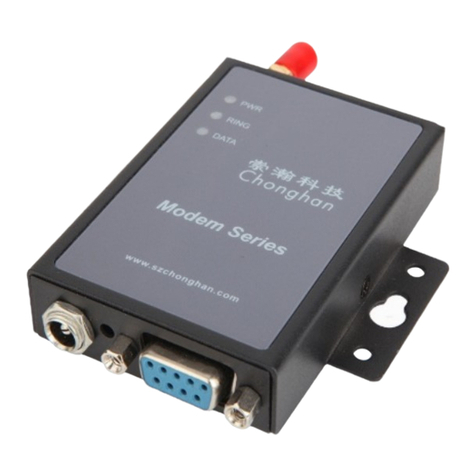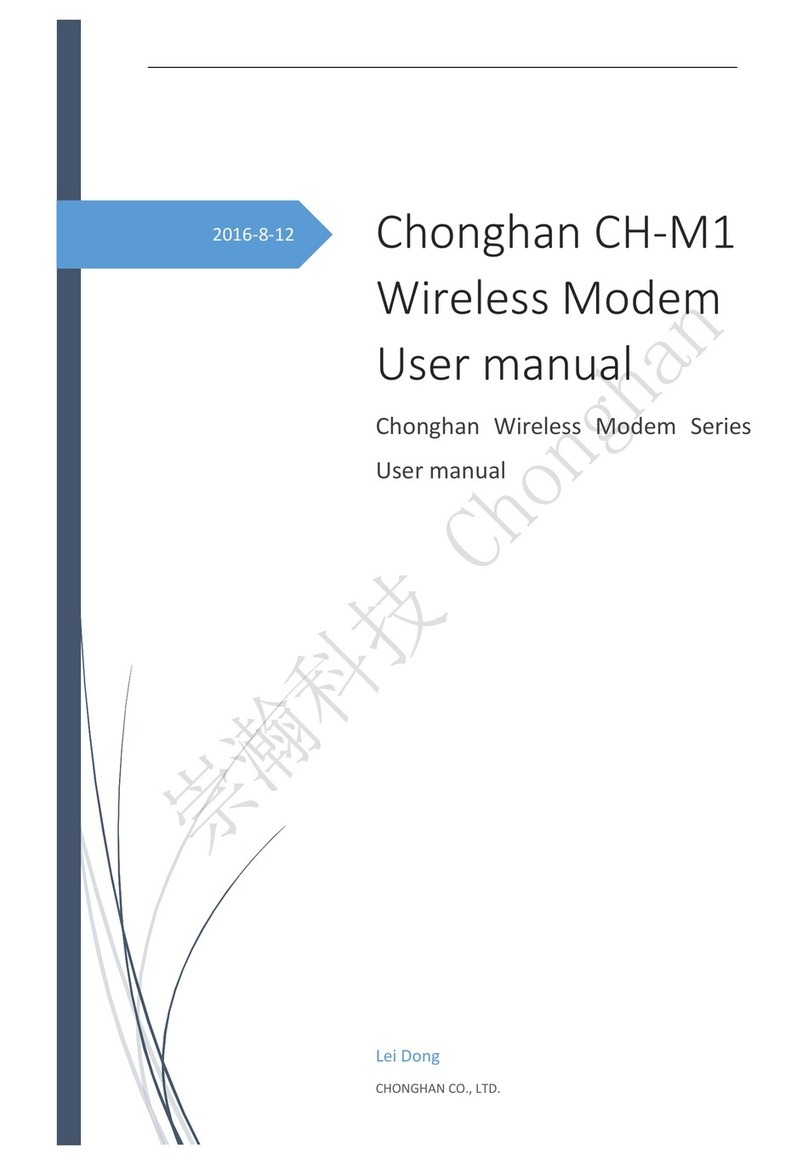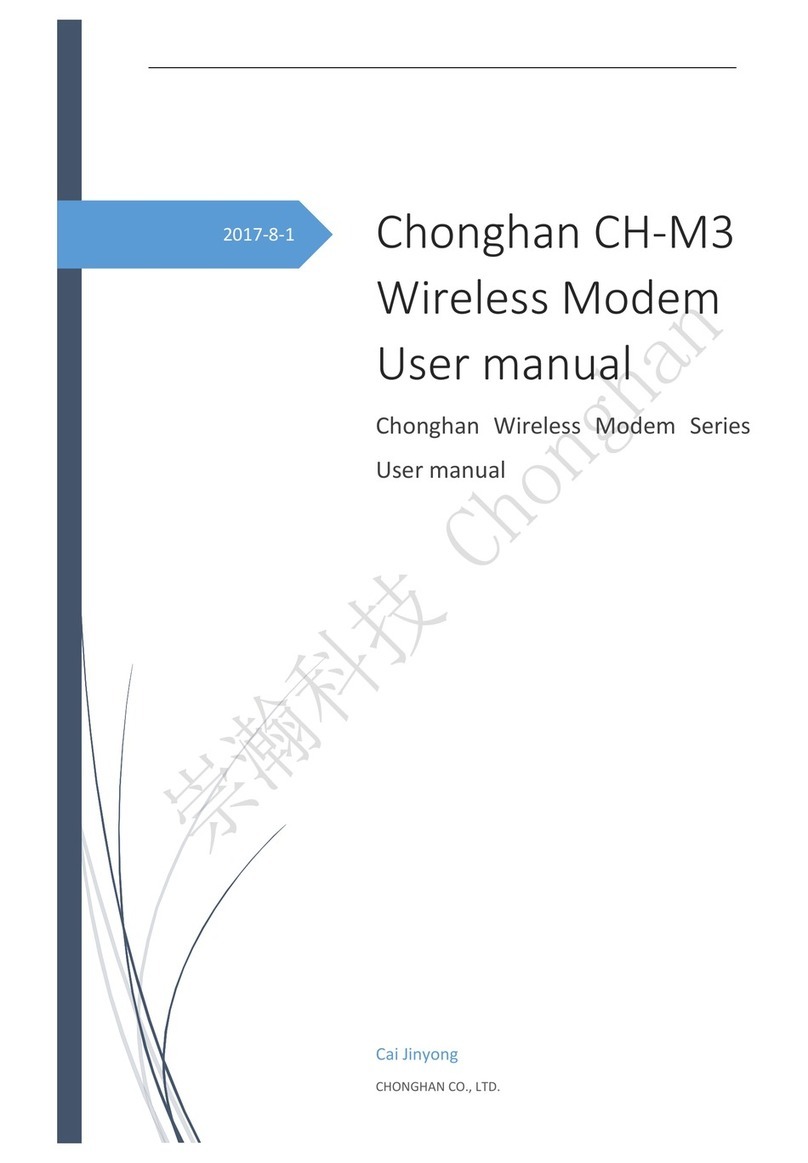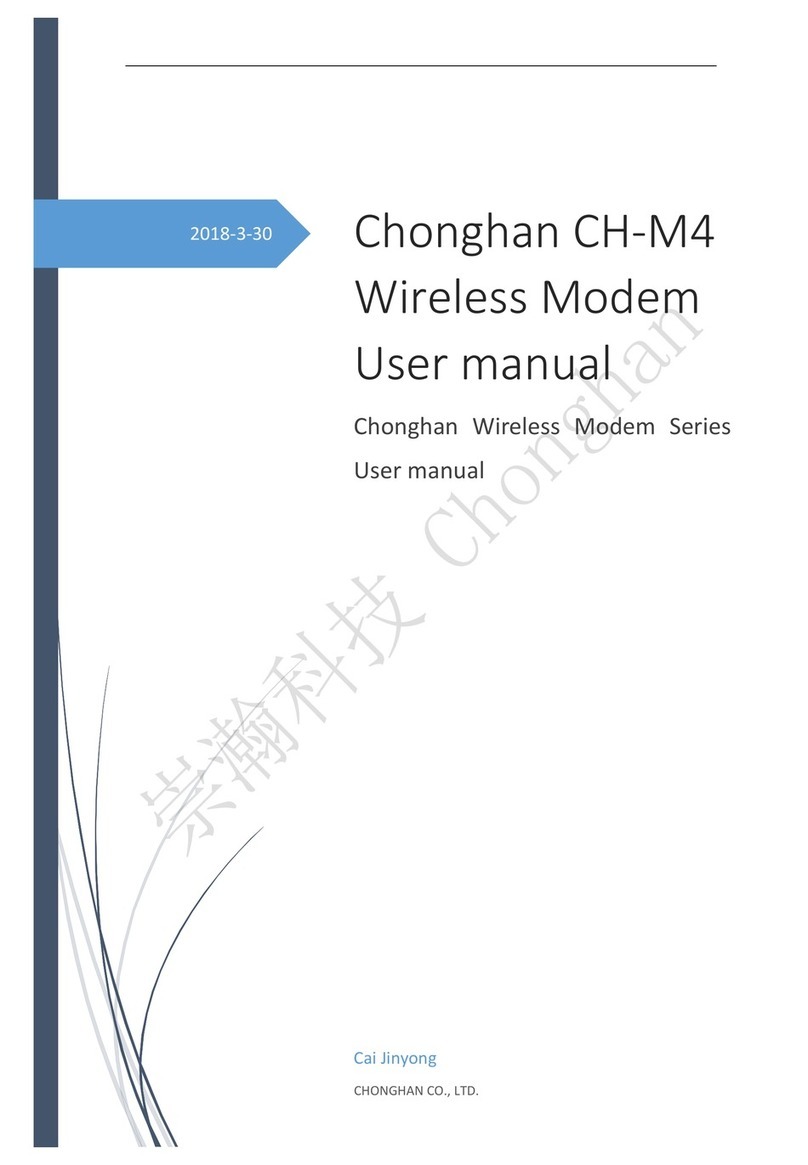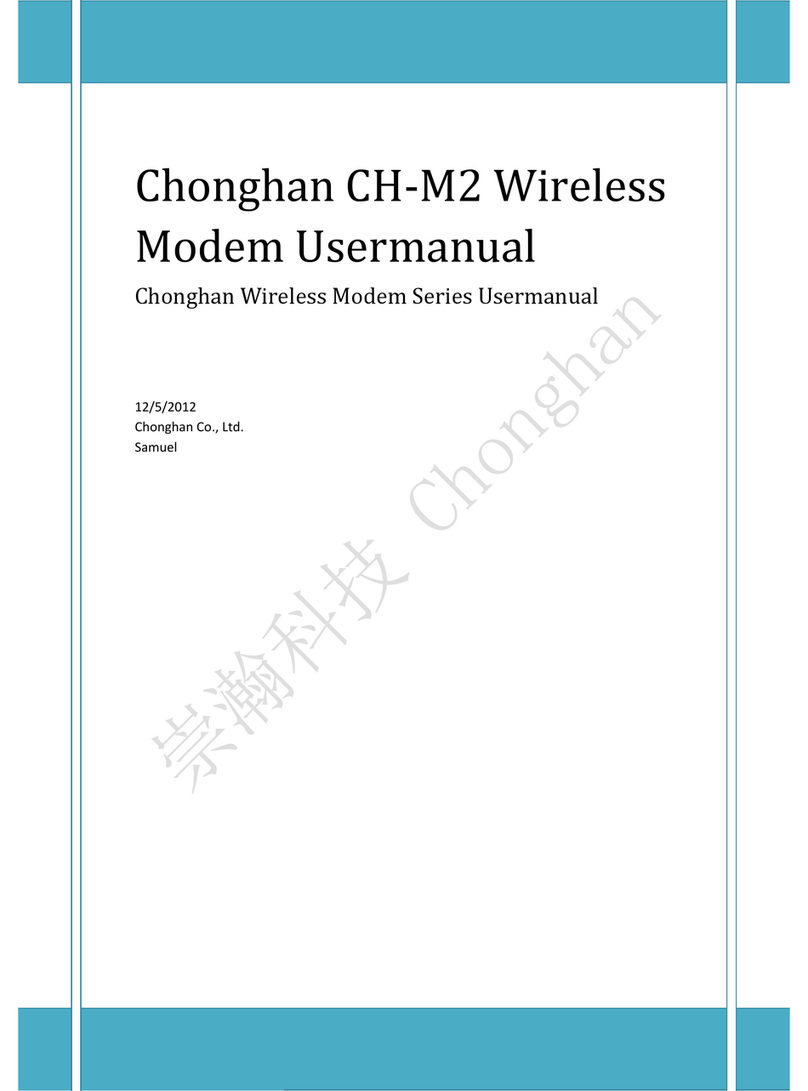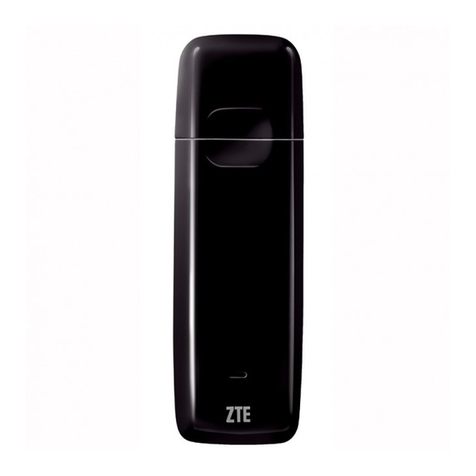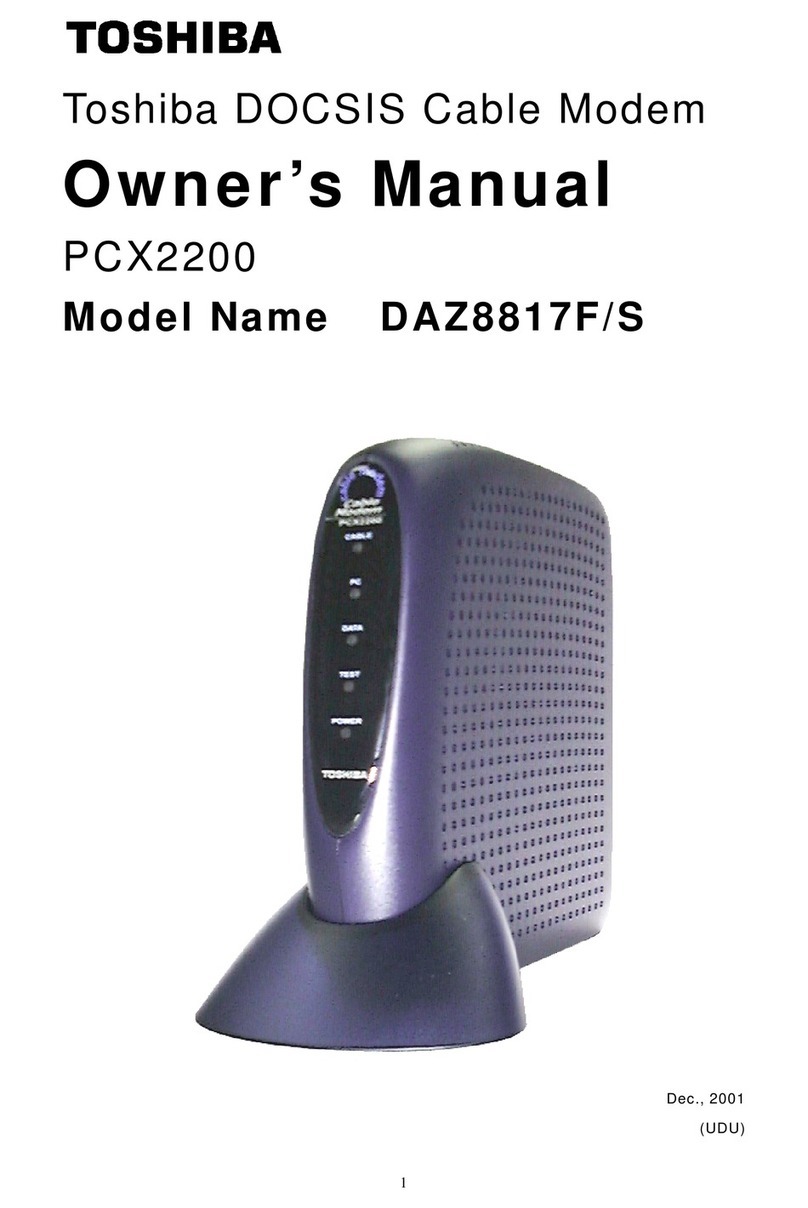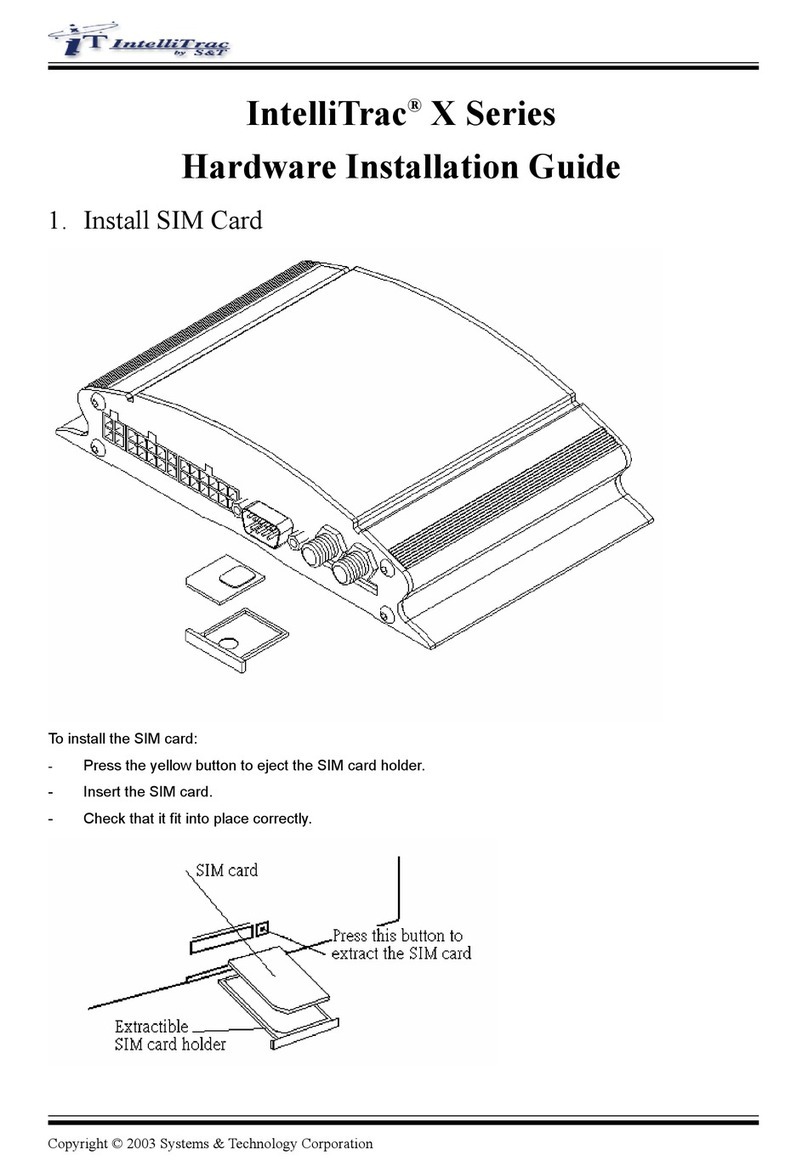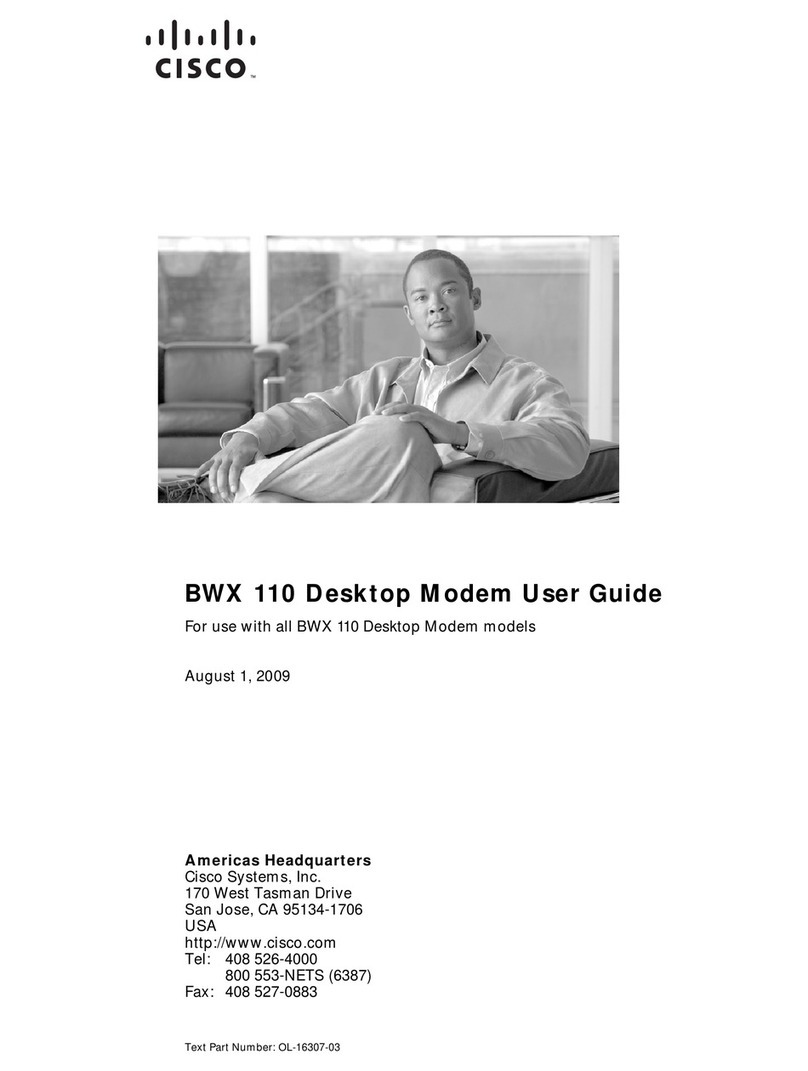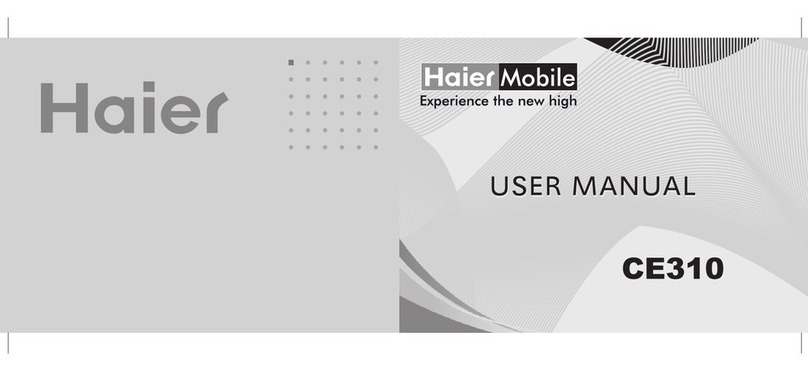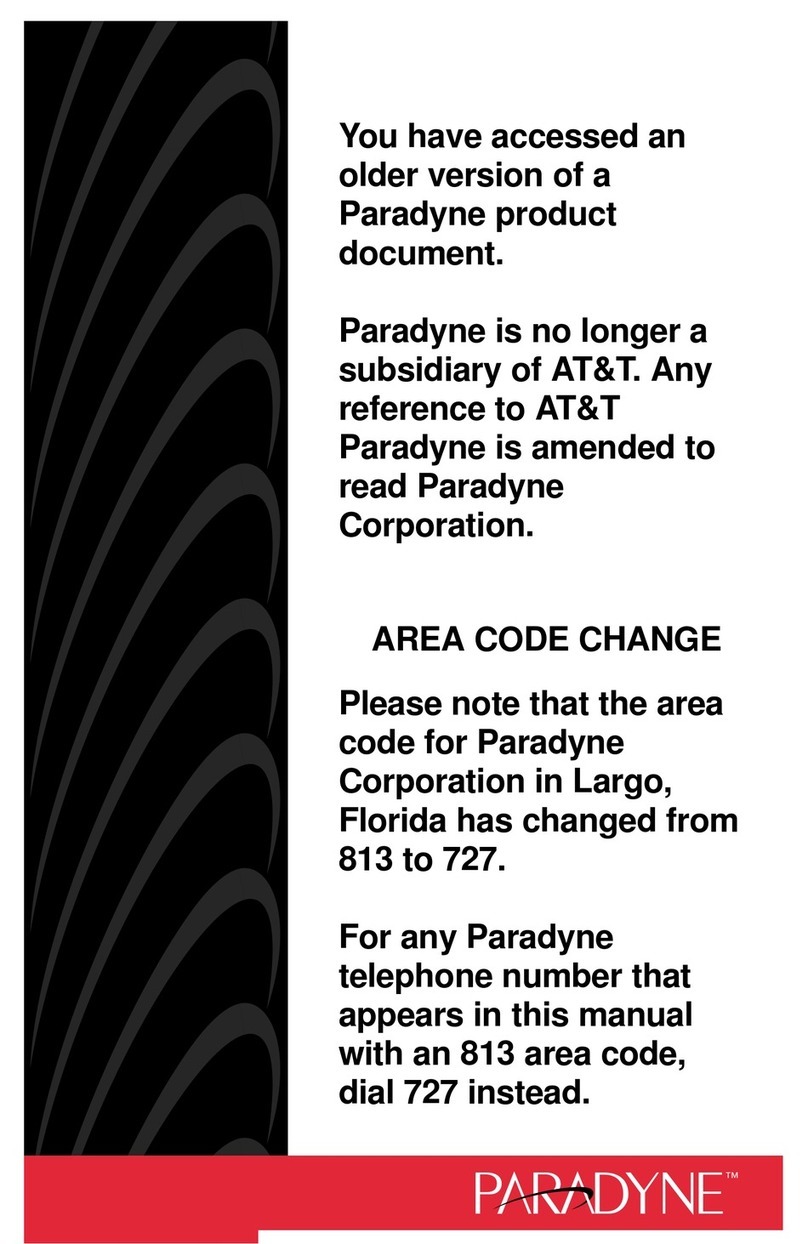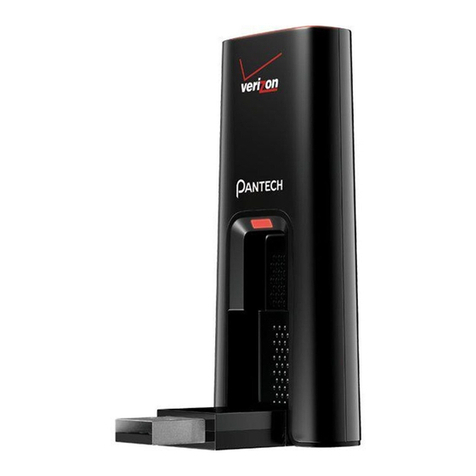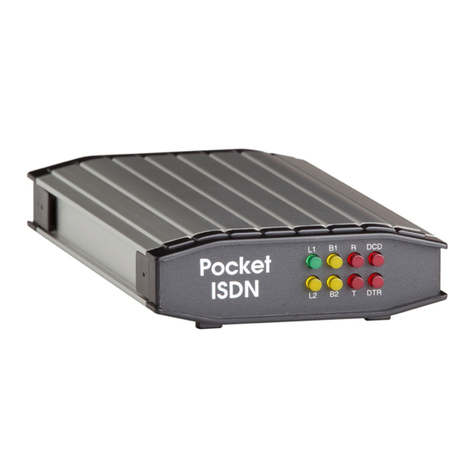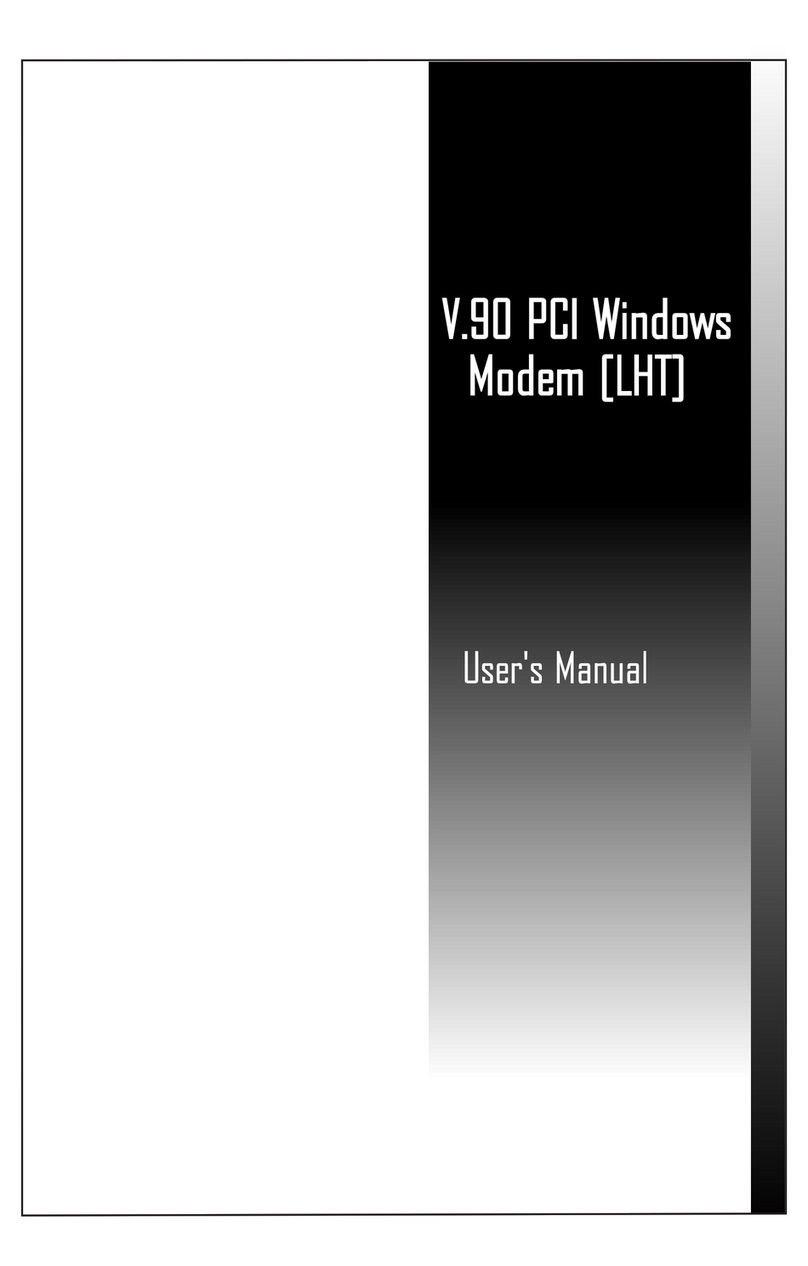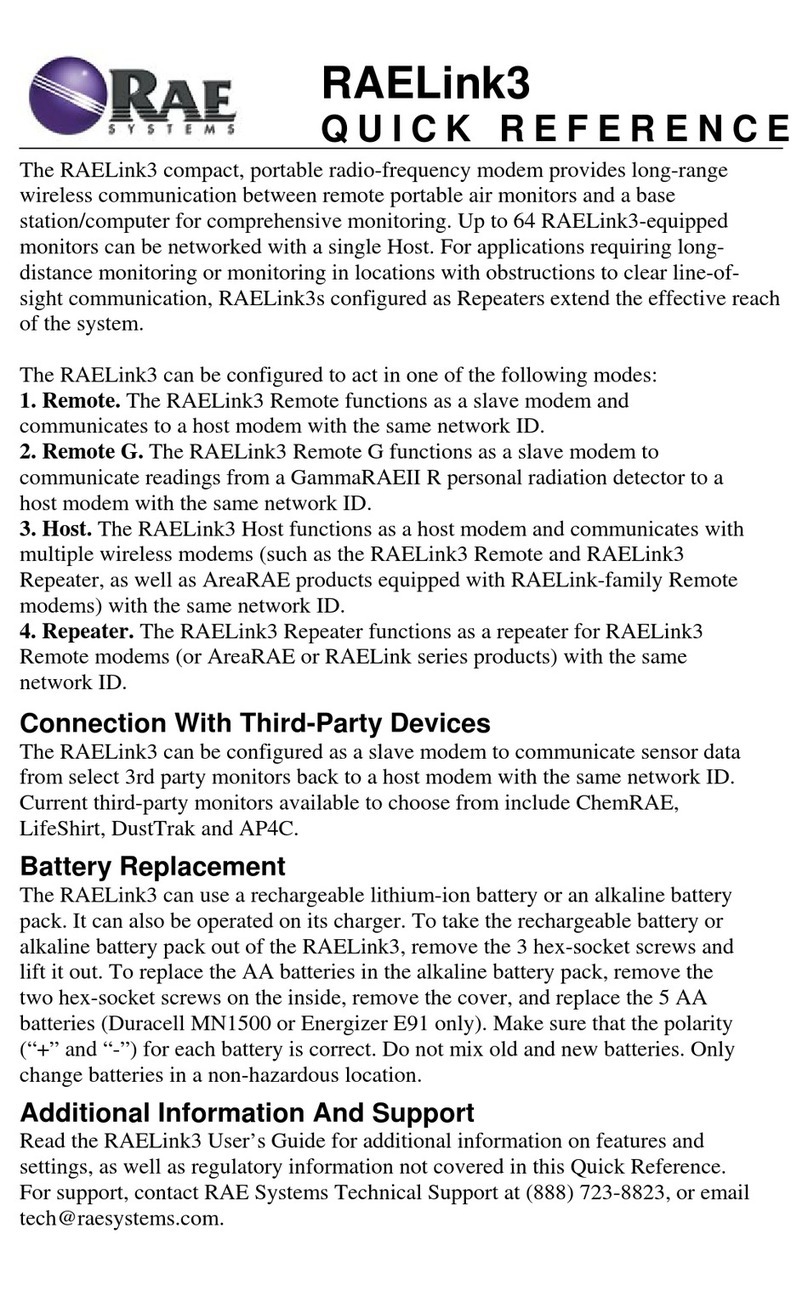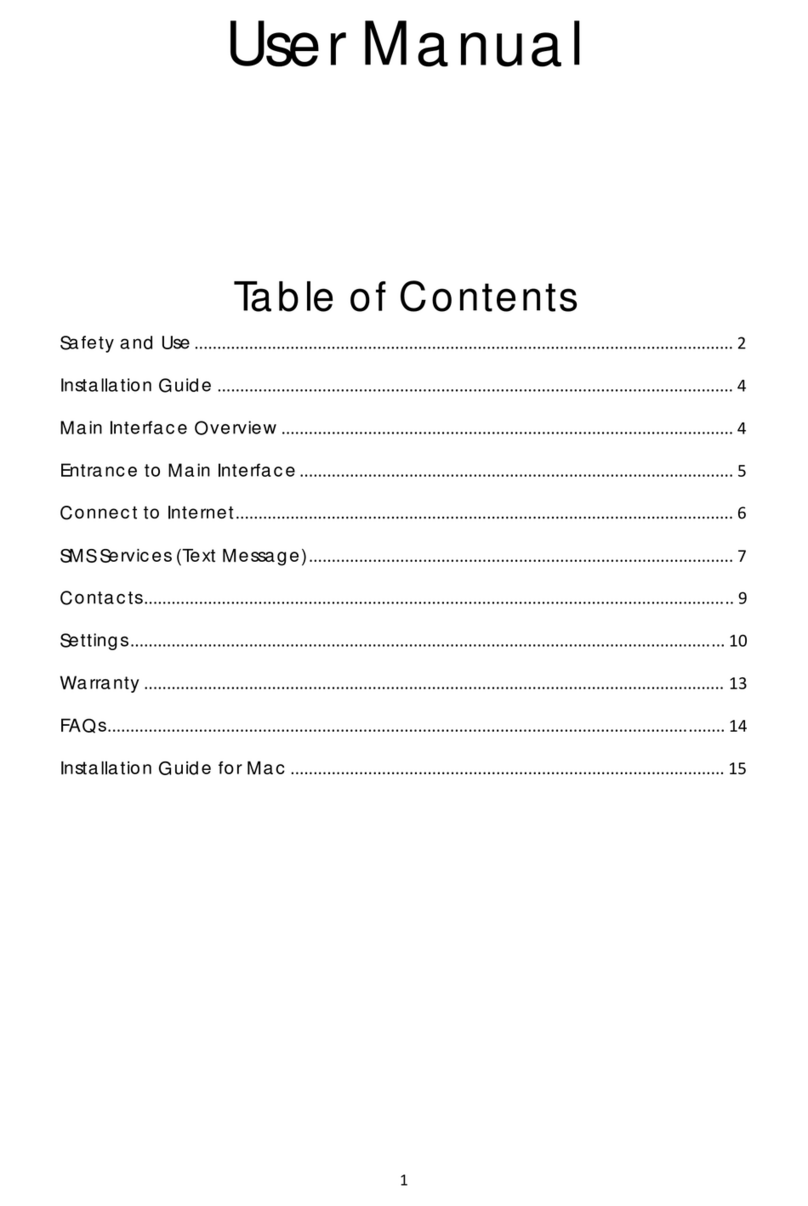Chonghan CH-D3 Series User manual

2018-3-30
Chonghan CH-D3
Wireless DTU
User manual
Chonghan Wireless DTU Series User
manual
Cai Jinyong
CHONGHAN CO., LTD.

CAI JINYONG
2018-3-30
CHONGHAN CH-D3 WIRELESS DTU USER MANUAL
页2
崇瀚科技
Chonghan
Power by Chonghan

Important Notice
Due to the nature of wireless communications, transmission and reception of data can never
be guaranteed. Data may be delayed, corrupted (i.e., have errors) or be totally lost. Although
significant delays or losses of data are rare when wireless devices such as the Chonghan Wireless
device are used in a normal manner with a well‐constructed network, the Chonghan Wireless
device should not be used in situations where failure to transmit or receive data could result in
damage of any kind to the user or any other party, including but not limited to personal injury,
death, or loss of property. Chonghan Wireless accepts no responsibility for damages of any kind
resulting from delays or errors in data transmitted or received using the Chonghan Wireless device,
or for failure of the Chonghan Wireless device to transmit or receive such data.
Safety and Hazards
Do not operate the Chonghan Wireless device in areas where blasting is in progress, where
explosive atmospheres may be present, near medical equipment, near life support equipment, or
any equipment which may be susceptible to any form of radio interference. In such areas, the
Chonghan Wireless device MUST BE POWERED OFF. The Chonghan Wireless device can transmit
signals that could interfere with this equipment. Do not operate the Chonghan Wireless device in
any aircraft, whether the aircraft is on the ground or in flight. In aircraft, the Chonghan Wireless
device MUST BE POWERED OFF. When operating, the Chonghan Wireless device can transmit
signals that could interfere with various airborne systems.
Note: Some airlines may permit the use of cellular phones while the aircraft
is on the ground and the door is open. Chonghan Wireless device may be
used at this time.
The driver or operator of any vehicle should not operate the Chonghan Wireless device while
in control of a vehicle. Doing so will detract from the driver or operator’s control and operation of
that vehicle. In some states and provinces, operating such communications devices while in control
of a vehicle is guilty.
Limitations of Liability
This manual is provided “as is”. Chonghan Wireless makes no warranties of any kind, either
expressed or implied, including any implied warranties of merchantability, fitness for a particular
purpose, or infringement. The recipient of the manual shall endorse all risks arising from its use.
The information in this manual is subject to change without notice and does not represent a
commitment on the part of chonghan wireless. Chonghan wireless and its affiliates specifically
disclaim liability for any and all direct, indirect, special, general, incidental, consequential, punitive

CAI JINYONG
2018-3-30
CHONGHAN CH-D3 WIRELESS DTU USER MANUAL
页4
or exemplary damages including, but not limited to, loss of profits or revenue or anticipated profits
or revenue arising out of the use or inability to use any chonghan wireless product, even if
chonghan wireless and/or its affiliates has been advised of the possibility of such damages or they
are foreseeable or for claims by any third party.
Notwithstanding the foregoing, in no event shall Chonghan Wireless and/or its affiliates
aggregate liability arising under or in connection with the Chonghan Wireless product, regardless
of the number of events, occurrences, or claims giving rise to liability, be in excess of the price paid
by the purchaser for the Chonghan Wireless product.
Copyright
© 2010-2018 Chonghan Co., Ltd. All rights reserved.
Trademarks
“Chonghan®” is filed or registered trademark of Chonghan Co., Ltd. In P.R.China and/or in
other countries.
Windows® is a registered trademark of Microsoft Corporation.
QUALCOMM® is a registered trademark of QUALCOMM Incorporated. Used under license.
Other trademarks are the property of the respective owners.
Contact Information
Company Chonghan Co., Ltd.
Sales Desk
Phone
+86 (0755) 26458200
Hours 8:30 AM to 6:00 PM GMT+8
Email [email protected]
FAX +86 (0755) 26458200 x 805
Post Floor 2,Building 14,Nangang First Industrial Area, Songbai Road, Nanshan District,
Shenzhen, Guangdong, China.
Web http://www.szchonghan.com/

CAI JINYONG
2018-3-30
CHONGHAN CH-D3 WIRELESS DTU USER MANUAL
页5
Contents
Important Notice...............................................................................................................................3
Safety and Hazards............................................................................................................................3
Limitations of Liability .......................................................................................................................3
Copyright...........................................................................................................................................4
Trademarks........................................................................................................................................4
Contact Information..........................................................................................................................4
Contents ............................................................................................................................................5
1. Overview ...................................................................................................................................7
1.1. Document History .....................................................................................................7
1.2. References.................................................................................................................7
1.3. Abbreviations ............................................................................................................7
1.4. Products List ..............................................................................................................8
1.5. Presentation Rules ....................................................................................................8
1.6. Character Type ..........................................................................................................8
1.7. AT+I Command Syntax...............................................................................................8
2. Introduction ..............................................................................................................................9
2.1. Features.....................................................................................................................9
2.2. Application ................................................................................................................9
3. Basics.......................................................................................................................................10
3.1. Hardware Connection .............................................................................................10
3.2. Software Tools.........................................................................................................11
3.3. Mode Switch Command..........................................................................................11
4. Configure DTU .........................................................................................................................12
4.1. TCP Transmit............................................................................................................12
4.1.1. TCP Client Always Online.................................................................................12
4.1.2. TCP Client Trigger online .................................................................................12
4.1.3. TCP Client Step by Step ...................................................................................12
4.1.4. TCP Server .......................................................................................................12
4.2. UDP Transmit...........................................................................................................13
4.2.1. UDP Always Online ..........................................................................................13
4.2.2. UDP Trigger Online ..........................................................................................13
4.2.3. UDP Step by Step.............................................................................................13
5. Common Function...................................................................................................................13
5.1. Ping..........................................................................................................................13
5.2. Baud Rate ................................................................................................................14
5.3. Setup APN or VPDN.................................................................................................14
5.3.1. Setting APN Configuration...............................................................................14
5.3.2. Setting VPDN Configuration ............................................................................15
5.4. Transmit Mode ........................................................................................................15
5.5. Hardware Flow Monitor ..........................................................................................15
5.6. Software Flow Monitor ...........................................................................................16

CAI JINYONG
2018-3-30
CHONGHAN CH-D3 WIRELESS DTU USER MANUAL
页6
6. Three-view Drawing ................................................................................................................17
7. Product List .............................................................................................................................17

CAI JINYONG
2018-3-30
CHONGHAN CH-D3 WIRELESS DTU USER MANUAL
页7
1. Overview
DTU (IP Modem or M2M) used for serial port device data transparent transmit. The
document describes how to use the Chonghan CH-D3 series wireless DTU and FAQ. The aim to
help user easy and quick to test, use and disposition the DTU.
Note: Though all features are documented in this manual, new features
may still be in beta stage at publication and therefore may not yet be
validated. Please refer to the Customer Release Note for complete and
detailed information regarding beta and validated features at time of
release.
1.1. Document History
Version Date Comments Author
1.00 2016-09-19 Initial Release Version. Lei Dong
1.01 2016-12-02 Release new product D3G7M5. Lei Dong
1.02 2016-12-06 Add new product D3G2Q2. Lei Dong
1.03 2017-06-22 Refresh the pictures Lei Dong
1.04 2018-03-27 Modify the state of the indicator Cai Jinyong
1.2. References
CHONGHAN CHD1 WIRELESS DTU QUICKSTART ENG
1.3. Abbreviations
Abbr. Full name
APN Access Point Name
DAC Digital Analog Converter
GGSN Gateway GPRS Support Node
GPRS General Packet Radio Service
IP Internet Protocol
KB Kilobyte
MCC Mobile Country Code
MNC Mobile Network Codes
MS Mobile Station
PDU Protocol Data Unit
PLMN Public Land Mobile Network
RSSI Received Signal Strength Indication
SMA Small Adapter
SMS Short Message Services

CAI JINYONG
2018-3-30
CHONGHAN CH-D3 WIRELESS DTU USER MANUAL
页8
1.4. Products List
Product
Description
CH-D3G2Q2
GPRS
GSM850
,
EGSM900
,
DCS1800
,
PCS1900
RS-232/RS-485/TTL
CH-D3G7M5
LTE
GPRS/EDGE 900/1800MHz
CDMA 1X/EVDO BC0
TD-SCDMA:B34/B39
FDD-LTE:B1/B3/B8
TDD-LTE:B38/B39/B40/B41
UMTS/HSDPA/HSPA+:B1/B8
RS-232/RS-485/TTL
CH-D3G7Z19 LTE GSM: B3, B8
TD-SCDMA: B34/B39
FDD-LTE :B1/B3
TDD-LTE :B38/B39/B40/B41
CDMA 1X:800M
CDMA EVDO: 800M
WCDMA: B1
RS-232/RS-485/TTL
1.5. Presentation Rules
The AT+I commands ignore case. For recognizable, the lowercase for input and uppercase for
respond. For example:
at+i<cr> // input command
I/OK // device response
1.6. Character Type
The send mode support all character send and receive, other mode only below valide:
Type Value Describe
Printable 0x20 ~ 0xFE <0x20> … <0xFE>
Carriage Return 0x0D <cr>
Line Feed 0x0A <lf>
Submit 0x1A <Ctrl+z>
Escape 0x1B <Esc>
1.7. AT+I Command Syntax
at+ixxxx=?<cr> // returns the list of
parameters and value ranges
at+ixxxx=<…><cr> // sets user-definable parameter
values
at+ixxxx?<cr> // returns the currently set
value
at+ixxxx<cr> // execution command

CAI JINYONG
2018-3-30
CHONGHAN CH-D3 WIRELESS DTU USER MANUAL
页9
Note: the AT+I command not case-sensitive, prefix by at+i and terminate
by <cr>.
2. Introduction
With the development of wireless communication technologies, wireless products are being
adopted in numerous industrial and civilian fields. Shenzhen Chonghan Co., Ltd. a leader of wireless
communication equipment manufacturer releases the CH-D3 Series Wireless DTU, which support
various frequency bands of GPRS/CDMA2000 1X/LTE, and provide industrial terminal solutions for
2.5G communication. As a wireless DTU, it support AT+I command set via RS-232/RS-485/TTL
interface.
CH-D3 series wireless DTU adopts industrial level modules, specially designed for the
complicated industrial environment which compatible with EMC, and will be your best choose of
wireless communication.
2.1. Features
Data transparent transmit
Always online
Trigger up online
Remote reboot
AT+I command interface
Support GPRS / CDMA2000 1X/LTE
Support APN or VPDN
LED: power, ring, data
Interface level: RS232 / RS485 / TTL
Watchdog(software and hardware)
Industrial design for small dimension
Robust industrial housing, Steel shell for anti-electromagnetic interference
DC5~48V wild rang, lower-power
2.2. Application
Remote Data Monitor and Control
Water, gas and oil flow metering
AMR (automatic meter reading)
Power station monitoring and control
Remote POS (point of sale) terminals
Traffic signals monitor and control
Fleet management
Power distribution network supervision
Central heating system supervision

CAI JINYONG
2018-3-30
CHONGHAN CH-D3 WIRELESS DTU USER MANUAL
页10
Weather station data transmission
Hydrologic data acquisition
Vending machine
Traffic info guidance
Parking meter
Telecom base station supervision (Mobile base station, microwave or optical relay station)
Oil field data acquisition
Warehouse supervision
3. Basics
3.1. Hardware Connection
Description
Image
LED Power ON running
Data FLASH
Inserted card, access
network
Antenna 50Ω/SMA/Female
SIM 3.3V/1.8V
Power Φ5.5mm/2.5mm
5~48V ( suggest 12V )
Serial Port DB9
Data Interface PIN RS-232 RS-485
1 DCD (Power for Option) NC (Power for Option)
2 TXD B
3 RXD A
4 DTR NC
5 GND GND
6 DSR NC
7 CTS NC
8 RTS NC
9 RI NC
Assemble the antenna, power adapter, connect the DTU to PC via RS-232 serial cable, open
the back cover, insert SIM/UIM card, at last, power on.
Note: Don’t insert or remove the SIM/UIM card in the power on status.

CAI JINYONG
2018-3-30
CHONGHAN CH-D3 WIRELESS DTU USER MANUAL
页11
3.2. Software Tools
Any serial port tools is compatible to DTU config, the follow is sample by SSCOM.
Open SSCOM.Click the send instruction in turn. Note: there is a return value and then the next
instruction operation.
3.3. Mode Switch Command
+++ // return to command mode, the
“+” do not display, wait 10
seconds for respond
I/ERROR(056) // the background operate is
abort, and start to accept
the commands
Send
Mode
Command
Mode
+++
at+i!snmd

CAI JINYONG
2018-3-30
CHONGHAN CH-D3 WIRELESS DTU USER MANUAL
页12
at+i!snmd<cr> // switch to transparent data
transmit mode
I/OK
4. Configure DTU
4.1. TCP Transmit
4.1.1. TCP Client Always Online
at+ihsr0=ip:port<cr> // set the host serve IP and
port
at+ipars<cr> // parameter save
at+i!snmd<cr> // switch to Serial Net mode
4.1.2. TCP Client Trigger online
at+ihsr0=ip:port<cr> // set the Server IP and port
at+iiato=n<cr> // n=Integer, the DTU will
offline when the connect no
data transport in (n) seconds
at+itup=1<cr> // set it to trigger up mode,
at+ipars<cr> // parameters save
at+isnmd<cr> // switch to Serial Net mode
4.1.3. TCP Client Step by Step
at+istcp:ip,port<cr> // establish a TCP connection to
the IP and port
I/(000) // 000 is the Right connection
handle
I/ERROR(075) // not register cellular
network,please check Card
and Signal quality
I/ERROR(207) // register cellular network,
But can 't connecting to TCP
server program,you should to
check firewall, IP Port and
port listen if collide with
them
at+issnd%:000,n:******* // send a stream(******) to
connect 000, length is (n),
at+isrcv:000<cr> // receive data from connection
000
at+iscls:000<cr> // close the connection 000
4.1.4. TCP Server
at+ihsrv=””<cr> // clear the parameter
at+ilprt=port<cr> // setting the listen port
at+istyp=0<cr> // TCP protocol
at+ipars<cr> // parameters save
at+i!snmd<cr> // switch to Serial NET mode

CAI JINYONG
2018-3-30
CHONGHAN CH-D3 WIRELESS DTU USER MANUAL
页13
Note: TCP Server must use always online function, please put jumper to the
pin of watch dog, and refer follow chapters for detail.
4.2. UDP Transmit
4.2.1. UDP Always Online
at+istyp=1<cr> // UDP protocol
at+ihsrv=ip:port<cr> // set opposite IP and port
at+ipars<cr> // parameters save
at+i!snmd<cr> // switch to Serial NET mode
4.2.2. UDP Trigger Online
at+istyp=1<cr> // UDP protocol
at+ihsrv=ip:port<cr> // set opposite IP and port
at+iiato=n<cr> // n=Integer, the DTU will
offline when the connect no
data transport in (n) seconds
at+itup=1<cr> // set it to trigger up mode,
refer chapter 8 for detail
at+ipars<cr> // parameters save
at+i!snmd<cr> // switch to Serial NET mode
Note: changes to Serial Net mode, the AT command don’t have "!"
4.2.3. UDP Step by Step
at+isudp:ip,port:lport<cr> // establish a UDP connection by
command. Send data to
ip&port, receive data from
lport
I/(000) // 000 is handle of the
connection
at+issnd%:000,n:******* // send a stream (******) to
connect 000, length is (n),
at+isrcv: 000<cr> // receive data from connection
000
at+iscls: 000<cr> // close the connection 000
5. Common Function
5.1. Ping
at+ipds1=220.192.32.103<cr> // setting primary destination
at+ipds2=220.192.0.130<cr> // setting backup destination,
when first destination reply
time out
at+ipds1=www.sina.com<cr> // setting primary destination
at+ipds2=www.21cn.com<cr> // setting backup destination,

CAI JINYONG
2018-3-30
CHONGHAN CH-D3 WIRELESS DTU USER MANUAL
页14
when first destination reply
time out
at+ipgt=10000<cr> // setting timeout
at+ipfr=n<cr> // setting frequency to send
ping packet
at+ipars<cr> // parameter save
Note: The function is only for Serial NET always online mode, detect
whether online by period sending ping packet. Redial up when be detected
offline. In Chinese mainland, China Unicom gateway filter the ping packet
to Internet, so the user should set the destination to China Unicom’ DNS.
Common China Unicom DNS: 220.192.32.103/220.192.0.130
5.2. Baud Rate
at+ibdrf=<rate><cr> // the command mode baud rate
at+isnsi=”<rate>,8,<parity>,1,0”<cr> // the send mode baud rate
at+ipars<cr> // parameter save
<rate>Baud Rate
32400
44800
5
9600
619200
738400
857600
9115200
<parity>Description
nno parity
oodd parity
eeven parity
Note: the baud rate will take effect after setting, save and reboot.
5.3. Setup APN or VPDN
5.3.1. Setting APN Configuration
Only for CH-D3
at+imis=”at+cgdcont=1,ip,ctlte”<cr> // Setting network(APN)

CAI JINYONG
2018-3-30
CHONGHAN CH-D3 WIRELESS DTU USER MANUAL
页15
at+iusrn=<cr> // user name(null)
at+ipwd=<cr> // password(null)
at+ipars<cr> // parameter save
5.3.2. Setting VPDN Configuration
Only for CH-D3
at+iusrn=<cr> // user name(null)
at+ipwd=<cr> // password(null)
at+iath=n<cr> // n=1(PAP),2(CHAP) Network
certification mode , need to
consult for the UN
at+ipars<cr> // parameter save
5.4. Transmit Mode
at+itup=0<cr> // disable the function
at+itup=1<cr> // trigger up mode
at+itup=2<cr> // always online mode
Note1: at+itup=2 are for common Serial NET, auto redial up when offline;
at+itup=1 is for Serial NET with trigger up, offline when no data transfer in
a period (refer chapter 9 for detail), and trigger up by some signal list below:
1 detect data need to transfer in serial port. 2 detect a ring signal, such as
the wireless module has been dialed.
Note2: When the DTU in the command mode, and at+itup=2, power on, in
about 20~30 seconds the DTU should auto dial up, do not respond any
command, If you don’t want to wait, press a stream “+”, to abort the DTU
operation.
5.5. Hardware Flow Monitor

CAI JINYONG
2018-3-30
CHONGHAN CH-D3 WIRELESS DTU USER MANUAL
页16
Time out K1 K2
∞
Open Open
15 mins Open Close
30 mins Close Open
5 mins Close Close
K3
Describe
RG Shortcut Monitor receive
GT Shortcut Reserve
Empty Reserve
5.6. Software Flow Monitor
at+iiato=n<cr> // n>60 (second), offline when
no data transfer (both send &
receive) in the setting time.
Note: In the common Send Mode and at+itup=2, the DTU should re-online
immediately. In the Serial NET with trigger up and at+itup=1, the DTU
should be offline until be trigger up

CAI JINYONG
2018-3-30
CHONGHAN CH-D3 WIRELESS DTU USER MANUAL
页17
6. Three-view Drawing
7. Product List
Name Unit Quantity Describe Picture
CH-D3 Item 1 Device

CAI JINYONG
2018-3-30
CHONGHAN CH-D3 WIRELESS DTU USER MANUAL
页18
Power Adapter Item 1 DC 12V1A
RS-232 Cable Item 1 Standard Supply
Antenna Item 1 Standard Supply
This manual suits for next models
4
Table of contents
Other Chonghan Modem manuals
